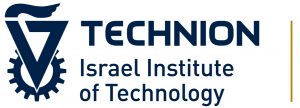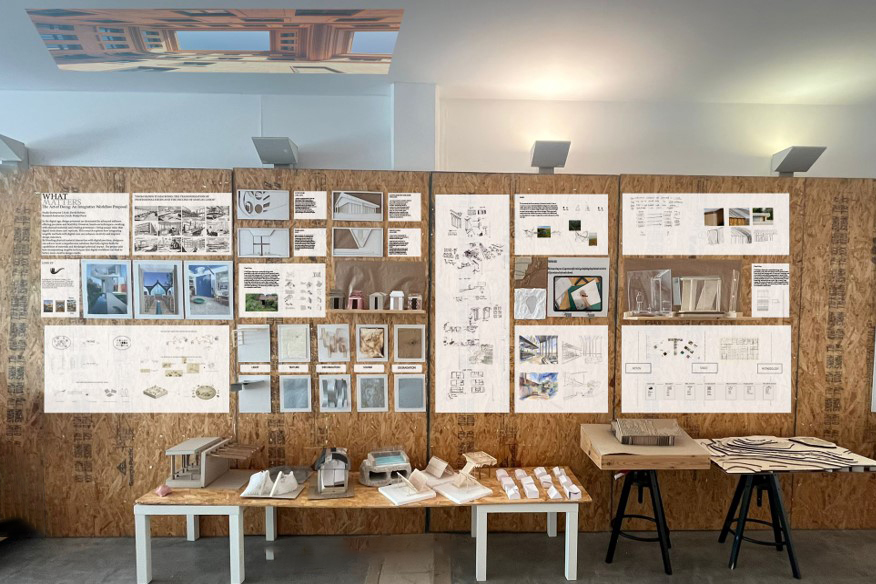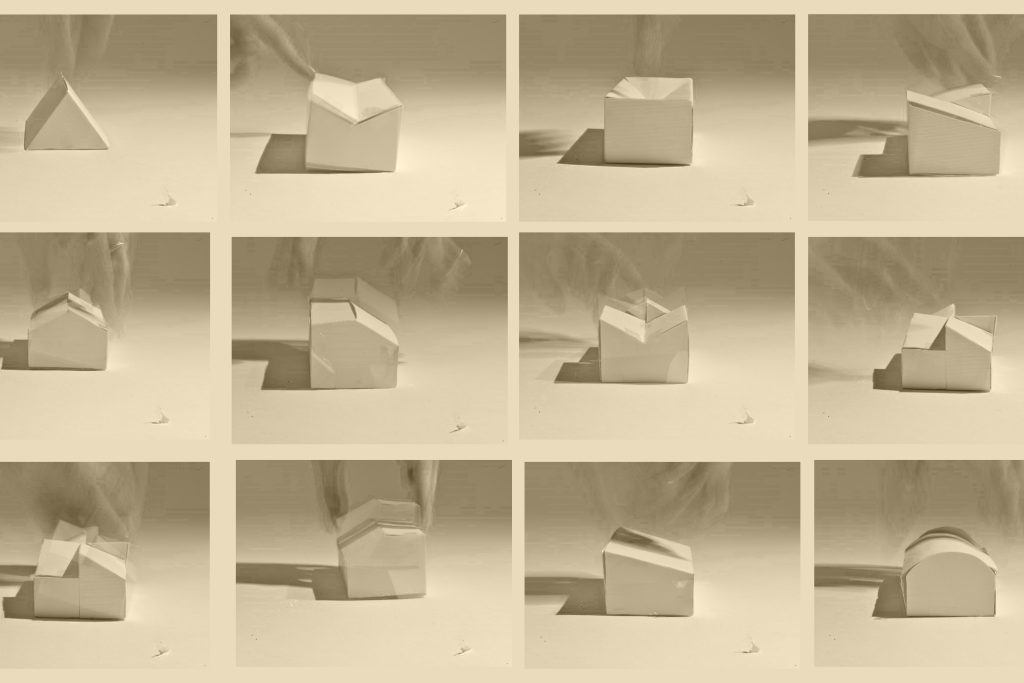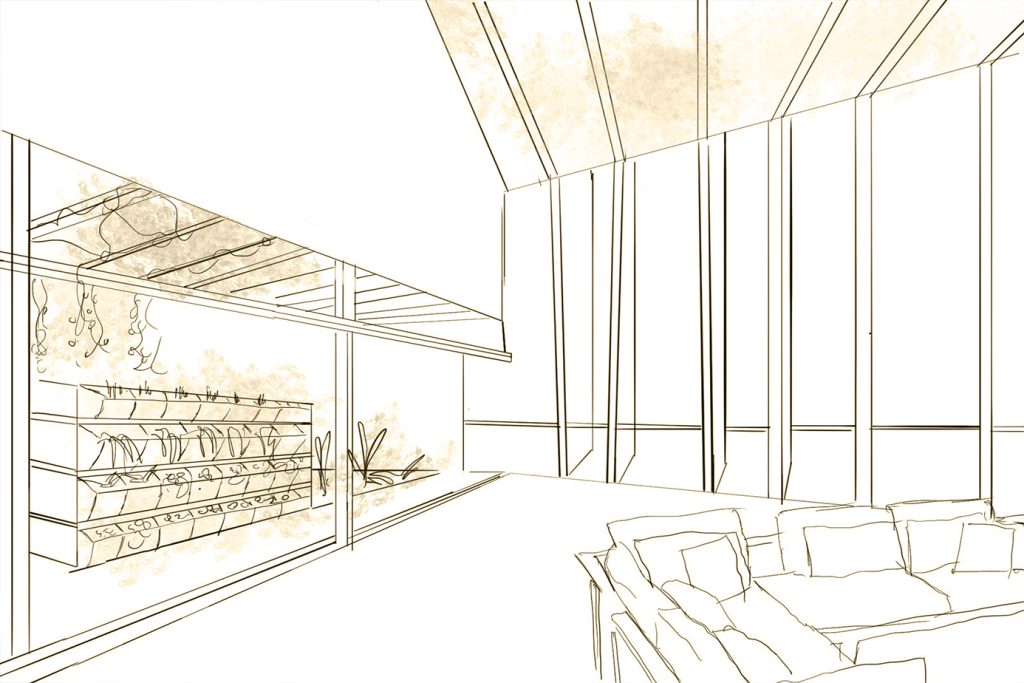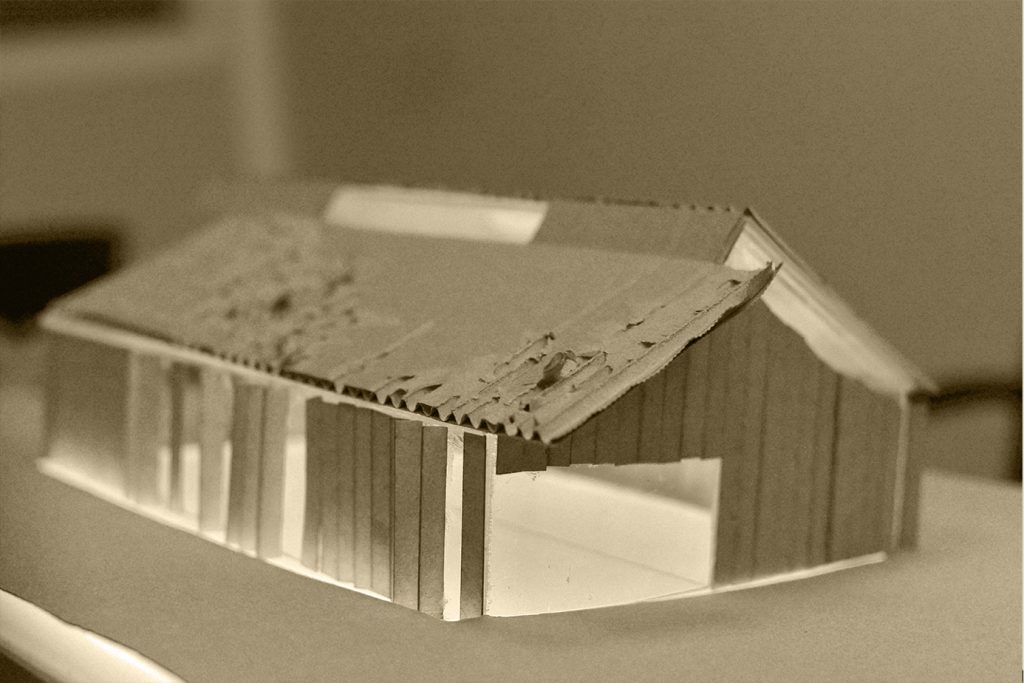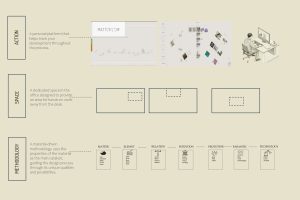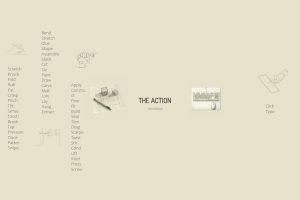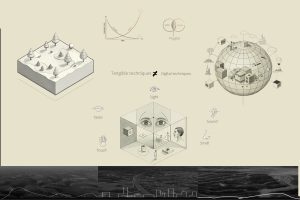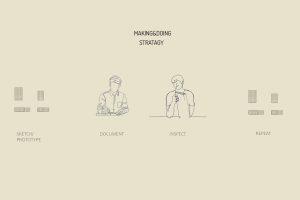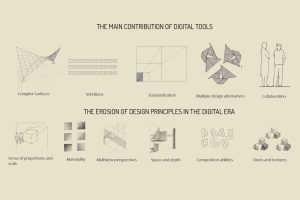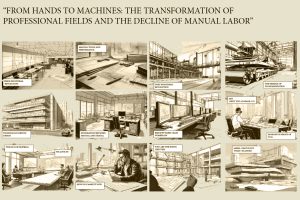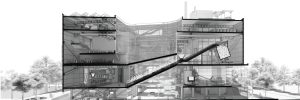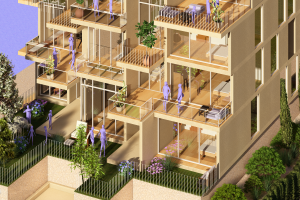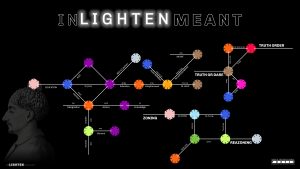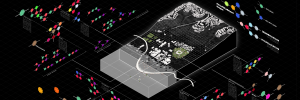Food for Thought
This project examines the integration of tangible techniques in the architectural design process in an era where digital representations constitute the core of architectural practice. The central question posed is: How does the integration of manual techniques contribute to the final outcomes, and is interaction with materials still relevant?
So, what does this really mean? Could manual exploration no longer be necessary? It seems that we have managed to compress the entire world into a screen, sparing our hands from injuries, or perhaps even keeping our nail polish intact. Yet, the question “Does this matter, and what exactly matters?” is more relevant than ever.
The project aims to uncover the complex relationship between manual methods and digital tools, emphasizing how the hands, through direct contact with materials, are an irreplaceable tool. Hands are not merely functional; they also stimulate thought and enable an active, creative thinking process that is unique and irreplaceable.
Through a review of architectural literature and personal experiences, the project presents essential questions and conclusions regarding the significance of this process. The findings point to the limitations of relying solely on digital tools, and to the benefits resulting from the use of tangible methods, such as sketching, modeling and prototyping.
Finally, this research underscores the need to preserve material memory and the connection to the craft itself. Manual work enriches the architectural experience, allowing to produce designs that are sensitive and adapted to the local context. The project concludes that a balanced integration of digital and tangible techniques leads to rich, innovative outcomes that are suited to their environment, demonstrating the importance of craftsmanship as an inseparable part of contemporary architectural design, and of finding a personal language that expresses intentions. Additionally, the project not only emphasizes the value of manual methods, but also proposes practical approaches for their optimal integration into daily practice, through a number of practical ways for the balanced combination of digital and tangible tools.
